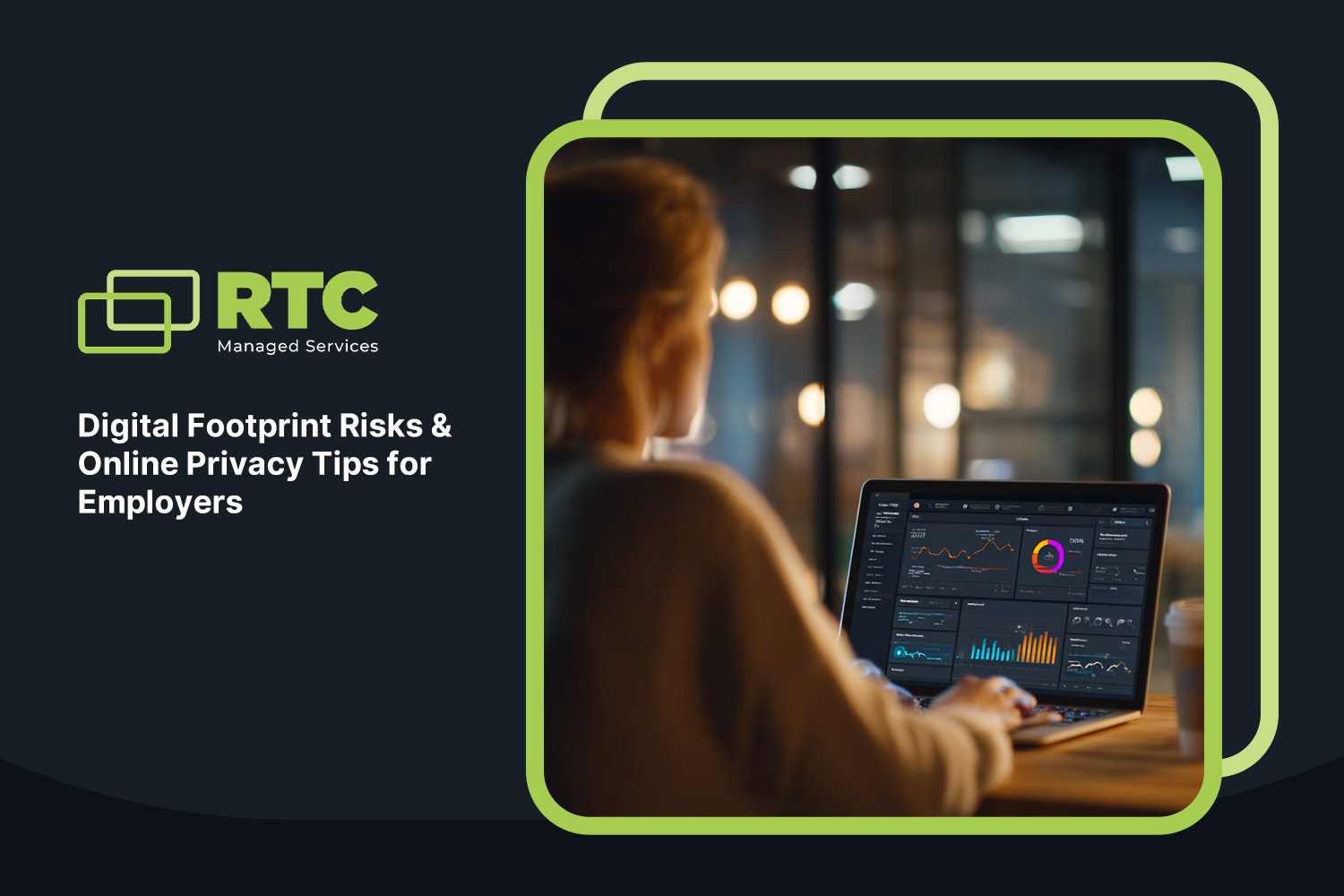Shared Hosting: What Web Hosts and Hosting Providers Must Know
Understand shared hosting, how it works, its pros and cons, and how to choose the right shared hosting provider for your business website.

Your digital footprint can shape how others see you—and your business. Whether you're applying for a job, managing a team, or running a company, your online presence matters. In this blog, you'll learn what a digital footprint is, why it’s important, and how to protect it. We’ll also cover the different types of digital footprints, how to delete old data, and what employers look for when reviewing online activity. You’ll get practical tips to manage your privacy settings, avoid cyber risks, and clean up your digital trail.
[.c-button-wrap2][.c-button-main2][.c-button-icon-content2]Contact Us[.c-button-icon-content2][.c-button-main2][.c-button-wrap2]
Your digital footprint is the trail of data you leave behind when you use the internet. It includes everything from your social media posts to your online shopping habits. Every time you log into an account, click a link, or share personal information, you add to your footprint.
There are two main types: an active digital footprint and a passive digital footprint. An active footprint includes things you choose to share, like comments or photos. A passive footprint includes data collected without your direct input, such as your IP address or browsing history. Both types can affect your online reputation and privacy.

Even small missteps can have long-term effects. Here are some common mistakes people and businesses make when managing their digital footprint.
Many users leave default privacy settings on their social media platforms and online accounts. This can expose sensitive information to the public or cybercriminals. Always review and adjust your privacy settings to control who sees your data.
Sharing too much personal information—like your location, birthday, or job details—can make you a target for phishing or identity theft. Be selective about what you post online.
Old accounts you no longer use can still hold personal data. These accounts may be vulnerable to breaches. Regularly review and delete accounts you no longer need.
Weak passwords make it easy for cybercriminals to access your online accounts. Use strong, unique passwords for each account and consider using a password manager.
Your digital footprint can impact how others see you, including potential employers. Negative or unprofessional content can hurt your chances in job applications or business deals.
Phishing scams often use fake emails or websites to trick you into giving up personal details. Always double-check links before clicking, especially in emails or messages.
Even if you're not posting, your online activities are still tracked. Search engines, websites, and apps collect data in the background. Use tools like a virtual private network (VPN) to reduce passive tracking.
Taking control of your digital footprint has several advantages:

For businesses, a digital footprint isn’t just about individual employees—it reflects the company’s brand. A poor online presence can affect customer trust, hiring, and even partnerships. Employers often review social media accounts and search engine results when evaluating candidates or vendors.
Cyber threats also target businesses through employee activities. For example, a staff member’s public social media post could unintentionally reveal sensitive company information. That’s why it’s important to train teams on safe online behavior and monitor your company’s digital presence.
You can take simple steps to protect your digital footprint. Here’s a list of practical actions to help you stay secure and in control.
Search your name and company online to see what shows up. Check social media platforms, blogs, and old accounts. This helps you understand your current footprint.
Remove old accounts, outdated posts, or content that no longer reflects your values. This reduces your exposure and keeps your online image current.
Use complex passwords that include letters, numbers, and symbols. Avoid using the same password across multiple accounts.
A VPN hides your IP address and encrypts your internet connection. This helps protect your data from being tracked or intercepted.
Avoid sharing personal details like your home address, phone number, or financial information unless absolutely necessary.
Set up alerts for suspicious activity and review your account settings often. This helps you catch problems early and take action quickly.
Make sure everyone in your company understands the risks of a poor digital footprint. Provide training on privacy settings, phishing scams, and secure browsing habits.

Following best practices can help you stay ahead of potential issues.
These habits can help you build a safer, more professional online presence.

Are you a business with 40–80 employees looking to improve your digital footprint? As your company grows, so does your exposure to online risks. Managing your digital presence is no longer optional—it’s essential for protecting your brand and your people.
At RTC Managed Services, we help businesses secure their online activities, protect sensitive information, and monitor digital exposure. Our team offers practical tools and expert support to clean up and control your digital footprint. Contact us today to learn how we can help.
[.c-button-wrap2][.c-button-main2][.c-button-icon-content2]Contact Us[.c-button-icon-content2][.c-button-main2][.c-button-wrap2]
A digital footprint is the record of your online activities, including websites you visit, social media posts, and accounts you create. It can affect your online reputation and even influence job opportunities or business deals.
Your footprint includes both active and passive data. Active digital footprints come from things you post, while passive ones are collected without your input. Together, they form a trail of data that others—like employers or cybercriminals—can access.
Start by reviewing your privacy settings on work-related platforms and using strong passwords. Avoid posting sensitive information or personal details on public channels.
Also, be cautious with online activities like clicking unknown links or using unsecured networks. These actions can expose your employer to cyber risks and damage your online reputation.
You can reduce your digital footprint, but deleting it entirely is difficult. Focus on removing old accounts, outdated posts, and unused online profiles.
Use a search engine to find what’s still visible and request removal where possible. Be aware that some data may be stored by third parties or archived, making it hard to fully erase.
Monitor both active and passive digital footprints. Active includes your social media posts, blog comments, and online reviews. Passive includes data like your IP address and browsing history.
Keeping track of both helps you understand what personal information is visible and how it might be used by others, including cybercriminals or potential employers.
Employers often check a candidate’s online presence to assess professionalism and fit. A poor digital footprint can raise concerns about judgment or behavior.
In some industries, online reputation is directly tied to business success. Employers may also worry about sensitive information being shared through social media accounts or public platforms.
Cyber activity like phishing, data breaches, or malware can expose your personal details and damage your digital footprint. These threats can also lead to identity theft or financial loss.
Using a virtual private network, secure passwords, and staying alert to suspicious activity can help protect your online account and reduce your exposure to cyber risks.
